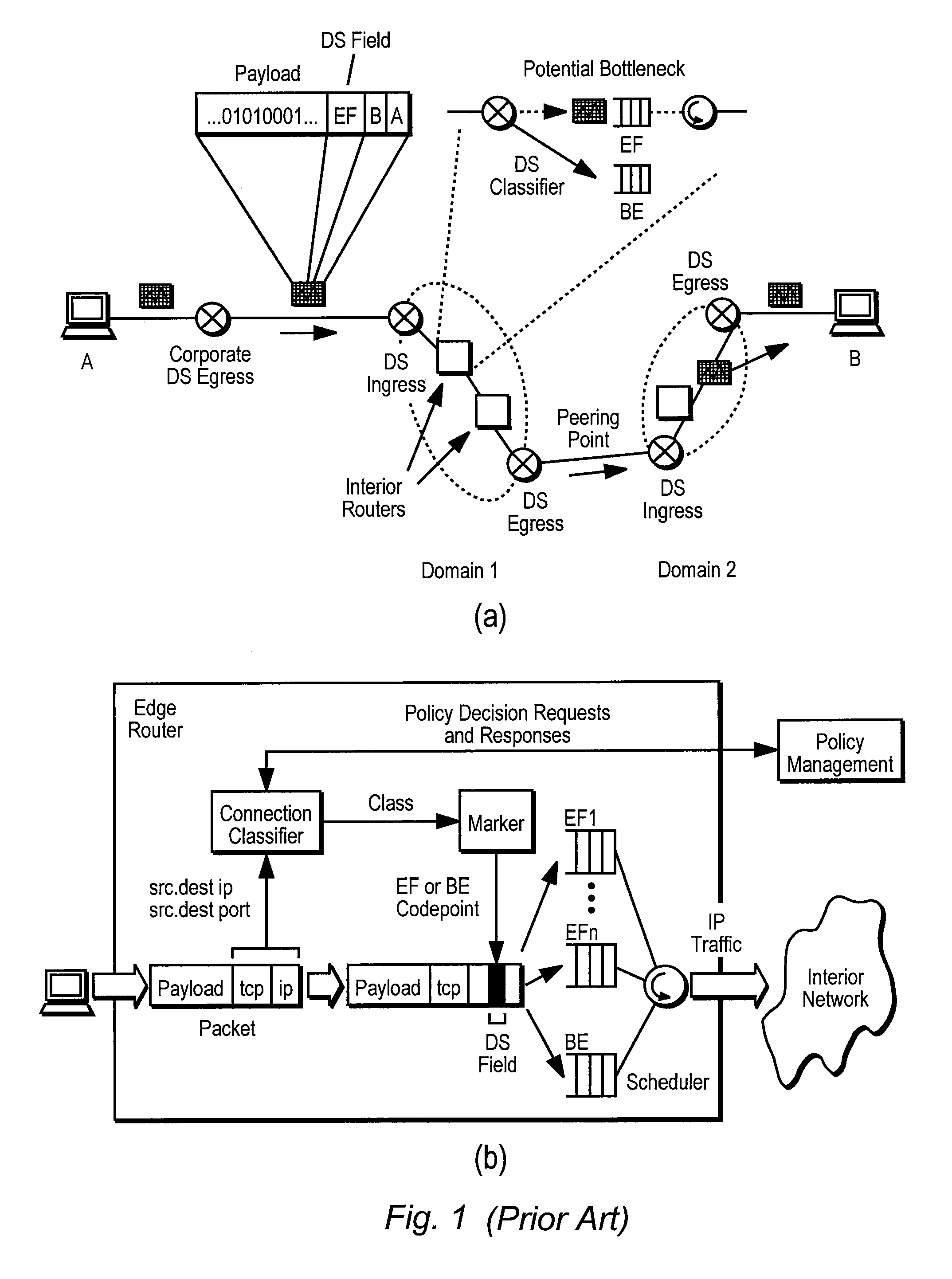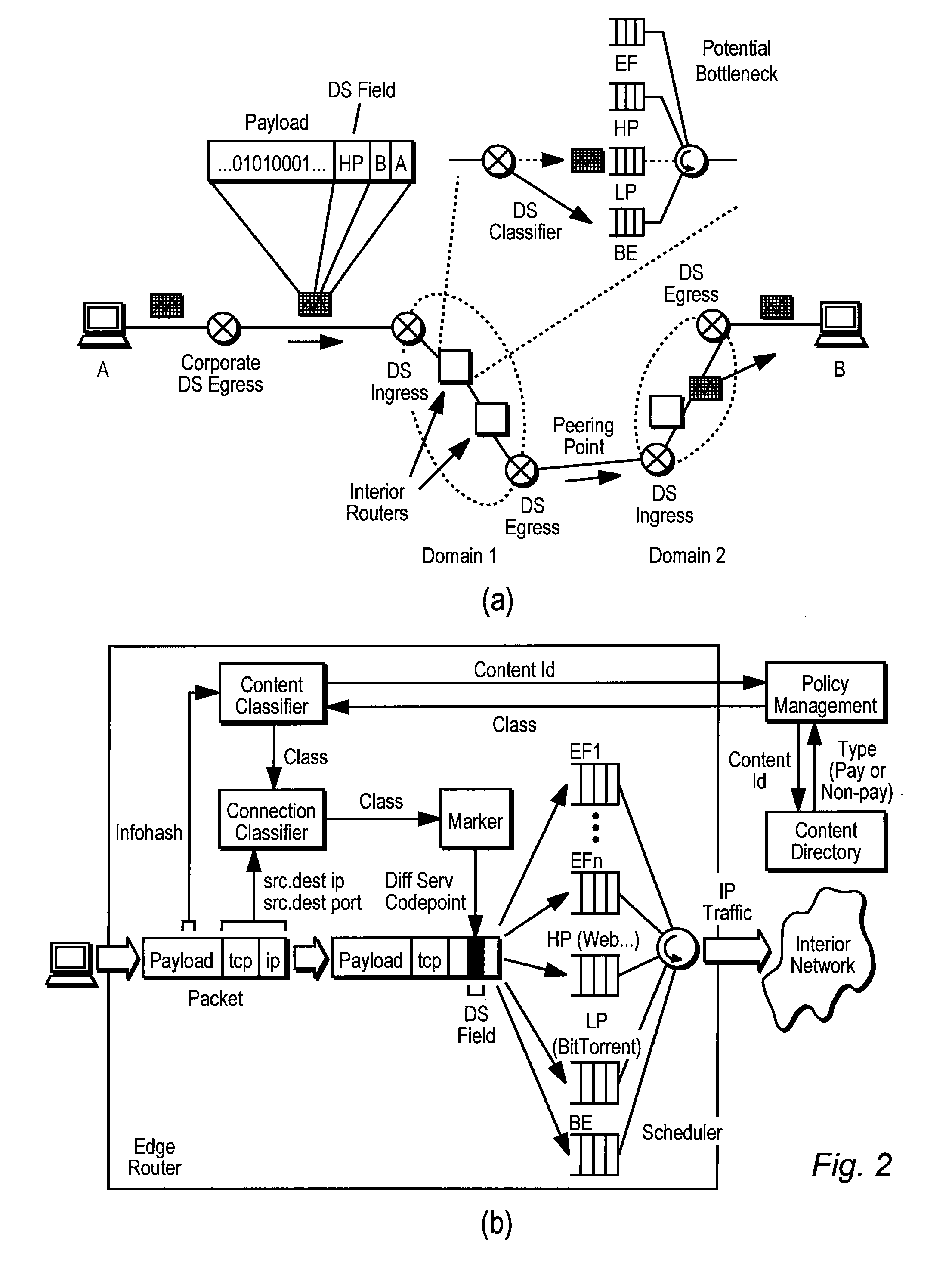Classification and Verification of Static File Transfer Protocols
a file transfer protocol and static file technology, applied in the field of network file transfer protocols, can solve the problems of inability to cost-effectively scale to the large demand placed on today's networks, failure of qos architecture, lack of appropriate business model, etc., to reduce computational requirements, improve scalability, and reduce cost and complexity
- Summary
- Abstract
- Description
- Claims
- Application Information
AI Technical Summary
Benefits of technology
Problems solved by technology
Method used
Image
Examples
Embodiment Construction
Definitions
[0039] For purposes of the remaining discussion, it is helpful to set forth some definitions of terms. These definitions are not intended to limit the scope of the invention described here, but rather are intended to only increase the readability of the disclosure.
[0040] The term “connection” refers to any flow between an application running on one network node and an application on another. This applies not only to TCP but also to UDP and other transports that establish such flows.
[0041] Protocols that meet the requirements for the classification and verification building blocks are called “qualifying protocols”. Specifically a qualifying protocol is any unicast file transfer protocol that meets the following requirements: [0042] 1) it can be used to transfer static files; [0043] 2) all of its connections have a content ID near the beginning, in BitTorrent this is the infohash; [0044] 3) every content ID must be globally unique with high probability or with certainty;...
PUM
 Login to View More
Login to View More Abstract
Description
Claims
Application Information
 Login to View More
Login to View More - R&D
- Intellectual Property
- Life Sciences
- Materials
- Tech Scout
- Unparalleled Data Quality
- Higher Quality Content
- 60% Fewer Hallucinations
Browse by: Latest US Patents, China's latest patents, Technical Efficacy Thesaurus, Application Domain, Technology Topic, Popular Technical Reports.
© 2025 PatSnap. All rights reserved.Legal|Privacy policy|Modern Slavery Act Transparency Statement|Sitemap|About US| Contact US: help@patsnap.com



